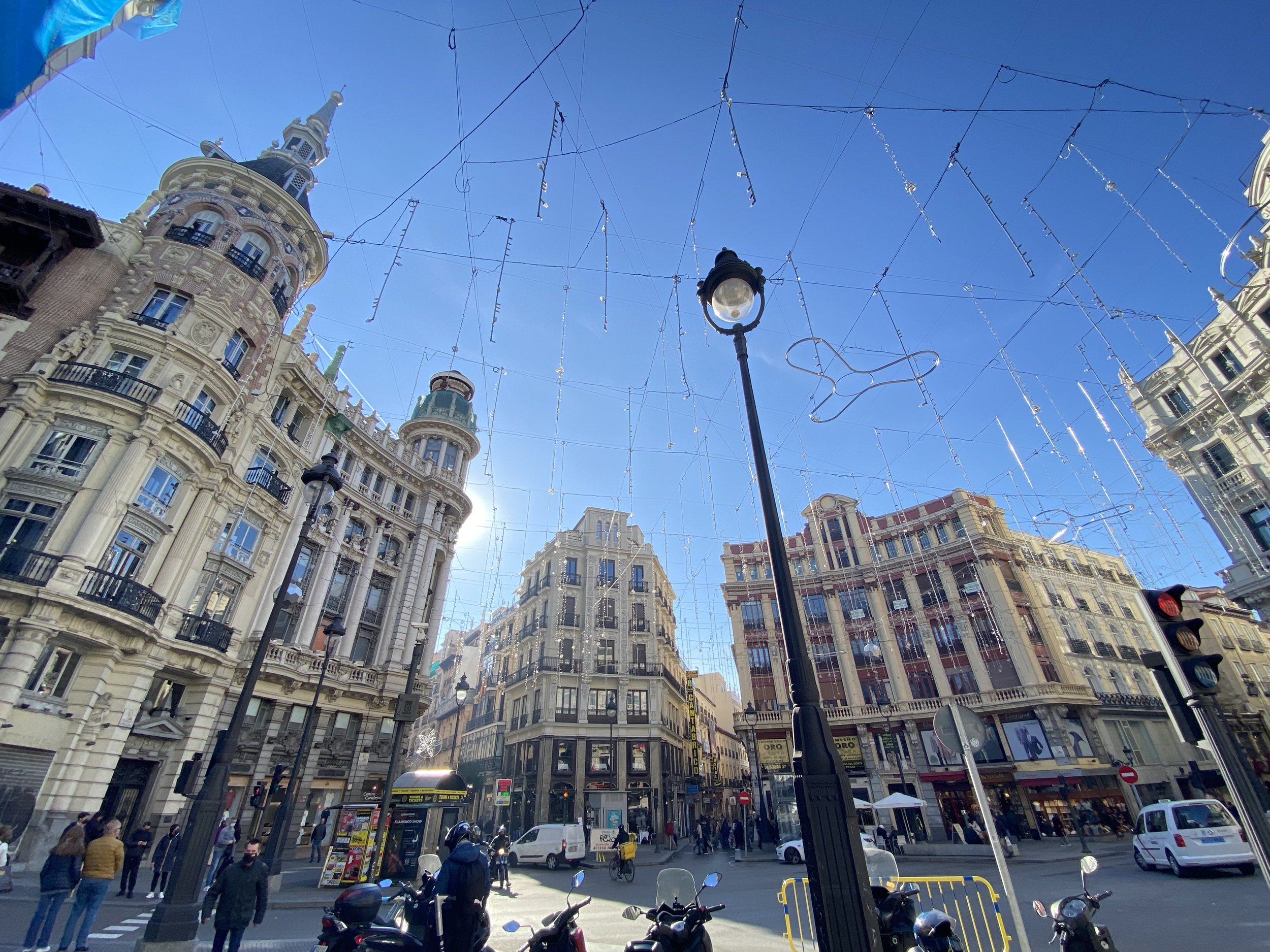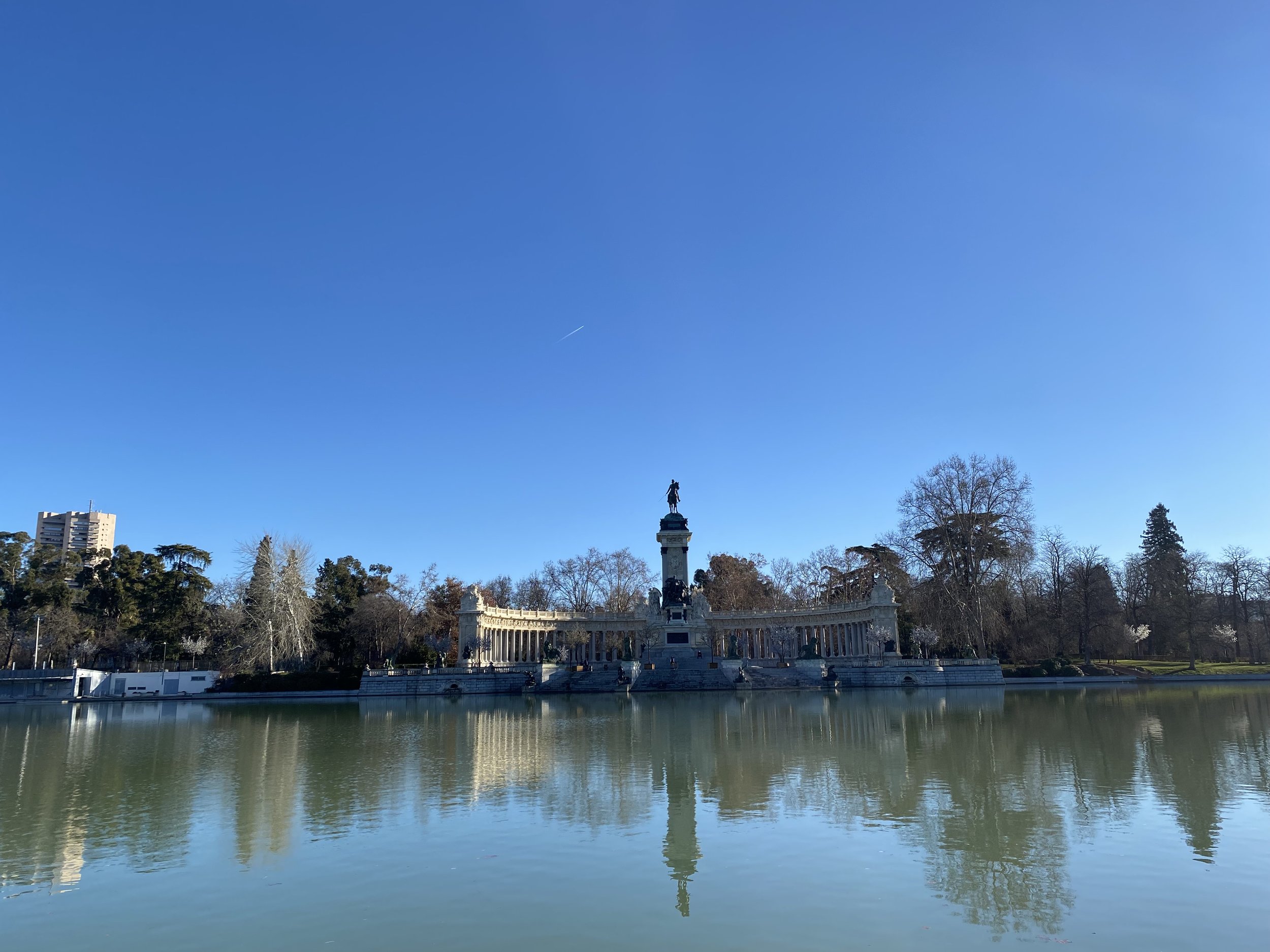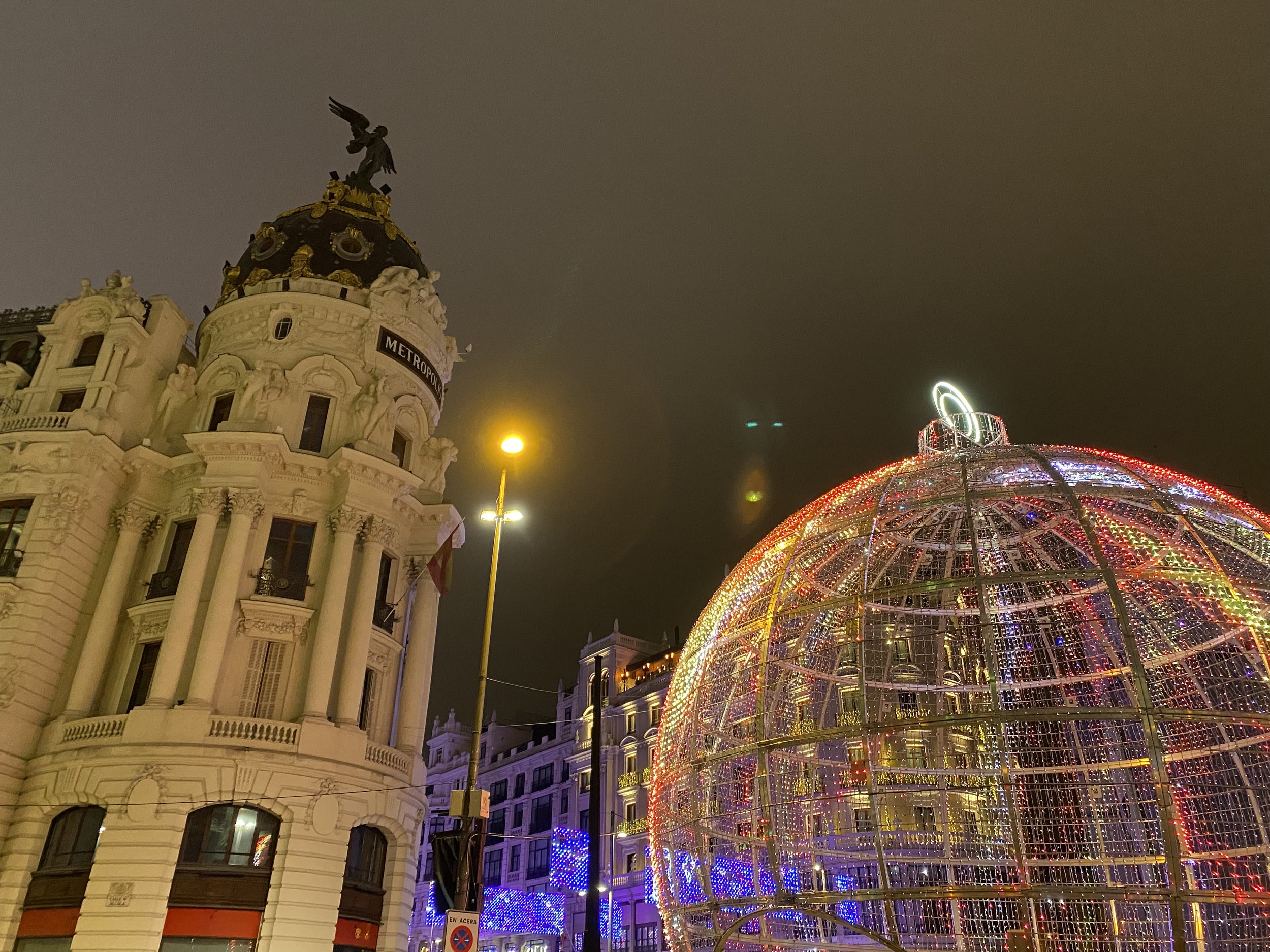Madrid: Spain’s Best Kept Secret in Plain Sight
It seems strange to describe Madrid as Spain’s best kept secret, but that’s exactly how I felt after spending four days there this Christmas. Madrid, Spain’s capital, is a lively city that is bursting at the seams with culture (and not just football culture). The city is a true fusion of different historical periods incorporated with the modern lifestyle of its people. A city often overshadowed by both its Northern neighbour, Barcelona, and the southern sun-traps dotted along the Andalusian coastline, Madrid truly is Spain’s ‘hidden gem’ that must be on your 2022 travel list.
The monument of Alfonso XII in El Retiro.
El Retiro
Despite studying Spanish, I have spent very little time in Spain and feel I know little about Spain as a county. So when me and a friend who also studies Spanish, Sadie, started dreaming about the return of foreign travel, Spain was instantly on the top of our list. Neither of us knew much about Madrid, but we decided that’s where we wanted to go.
We packed our bags, faffed about with Covid tests and had a last minute cancellation but we eventually landed in Spain's capital. We stayed in a small hotel opposite El Retiro, one of Madrid’s largest parks. This location was perfect; we took morning strolls and had cheap breakfasts (and great coffee) in the small cafés that look onto the lake and Alfonso XII monument. We admired some of the oddly proportioned statues taken from the Royal Palace in the Paseo de la Argentina (one of the ladies had ginormous hands) and spent two mornings meandering the park’s many paths.
The Palacio de Cibeles in the Plaza de Cibeles and breakfast overlooking the monument and lake in El Retiro.
El Retiro is a stone throws away from the centre of the city too. We were a short walk from everywhere we needed to go - the museums, the best restaurants and bars and surrounded by some of Madrid’s finest neo-classical architecture such as the Plaza de Cibeles. The park, no matter where you are staying in the city, is a must visit. At Christmas time, despite looking a bit twiggy, the park was incredibly picturesque and both the Paseo and the lake where lit up and lined with Christmas trees. Make sure you hire a small row-boat at the lake for €6 and visit the regularly-updated, free of charge exhibition provided by the Reina Sofía at the Palacio de Velazquéz. The park is also home to many street vendors, café’s and a large rose garden.
Madrid by Day
We spent our first day in Madrid wandering around quite aimlessly. We walked down Gran Vía, saw the Puerta del Sol and Plaza Mayor, both of which had great Christmas decorations and were busy with tourists enjoying the many nick-nack shops, restaurants and bars. Particularly during the festive period, these two squares are the places to be in Madrid. Plaza Mayor has a large Christmas market and Puerta del Sol is the is the best place to welcome in the New Year with fireworks and street parties. Just off the Plaza Mayor, we stopped for lunch at a tapas restaurant on the Calle del Toledo, my favourite street in Madrid, where we watched the world go by and admired Madrid’s neo-Mudéjar architecture.
Plaza Mayor and Sadie admiring a tapas menu on the Calle del Toledo.
From there, we made our way to the Royal Palace and cathedral - a beautiful spot with a great view overlooking the Royal gardens and the West of the city. The Cathedral is free to enter and an interesting example of Neo-Romanesque architecture that illustrates Madrid’s turbulent and unique history. Completed in 1993, the inner of the cathedral is slightly unexpected but well worth the visit. The queues to enter the Palace were incredibly long so this is one attraction that would definitely be worth booking in advance.
As we walked around Madrid, we couldn’t help but notice the unique street signs that are all accompanied with a small yet elaborate and colourful ceramic tile. Although only small, these signs really stood out and, for me, characterised Madrid. When crossing the roads, listen out for what we called the ‘city bird’ - the sound of the green man resembles a tweeting bird, a minute detail that adds to Madrid’s charm.
The Royal Palace and the inside of the cathedral.
Madrid by Night
On our first night we went for dinner at the Plaza de Santa Ana, something recommended to me by a friend in Madrid. This location did not disappoint. The square is full of restaurants and lively bars with an electric atmosphere. We saw street performers, including a man playing La Vie en Rose on his accordion on repeat and a street dance troop. The food was delicious yet well-priced and the wine even better. Finding this spot really was one of the highlights of the trip for me.
A Spanish iconic dish, patatas bravas, and the lively Plaza de Santa Ana.
Our experiences on the other two nights were equally as enjoyable. On our second night we went to the Bodega de los Secretos, an avant-garde Mediterranean restaurant based in a 17th century wine cellar. The food was exquisite and the history was amazing - the cellars were used as hiding places in both the Napoleonic Wars and during the Spanish Civil War. Admittedly, on the whole, I did struggle with the food in Madrid as many of the menus were made up of red meats and fish - there wouldn’t be much choice if you were vegetarian or vegan in many restaurants.
On our final night we watched a Flamenco show at Cardamomo. This is certainly a bucket-list experience. The show was jaw-dropping and well worth the money. There are a variety of flamenco shows in Madrid, so many that we were a bit overwhelmed with the choices but Cardamomo delivered on all levels.
One of the tables in the Bodega de los Secretos and the Librería Mistral.
Art in Madrid
During our two full days we spent more time wandering around the city. We stopped in cafes and ate and drank on the terraces and did some shopping. If you want a nice bookshop, try the Librería Mistral near Plaza Mayor.
Mt favourite painting by Salvador Dalí in the Reina Sofía and a work by Giaquinto in the Prado. (I was allowed to take pictures of these ones… I think).
We spent one afternoon in the Museo del Prado and the other in the Reina Sofía, two of the three museums in Madrid’s iconic and world-renowned Golden Triangle of Art. The Prado is Spain’s most famous art museum and houses some of the world’s finest European art. Inspired by the former Spanish Royal Collection, the museum has works by Goya, Rafael, Rubens and Velázquez, including the iconic Las Meninas… but don’t take a picture of this one… a security guard threatened to kick me out for doing so! The Prado was great if you love religious and regal Renaissance art but for me it lacked a bit of variety. We paid for our tickets, but at certain times, entry is free.
The Reina Sofía was much more exciting, especially if, like me, you love modern art. The museum is home to many works by Picasso, Dalí, Miró and countless other modern artists from around the globe. Much like the Prado, taking photos was forbidden in many of the galleries… Picasso’s Guernica was flanked by two eagle eyed security guards who weren’t pulling any punches!
Spain’s Best Kept Secret
In short, Madrid must not be overlooked when planning trips to Spain. It is an incredibly enriching city with a vibrant nightlife, history and art scene. What it lacks in beaches it makes up in sprawling green spaces and its art museums are truly unrivalled in the whole of Spain. I was never bored wandering its streets, there was always something to look at, whether it be the street signs, the countless intricate churches or the never-ending tapas menus. It really is Spain’s best kept secret.
All images are authors own.








